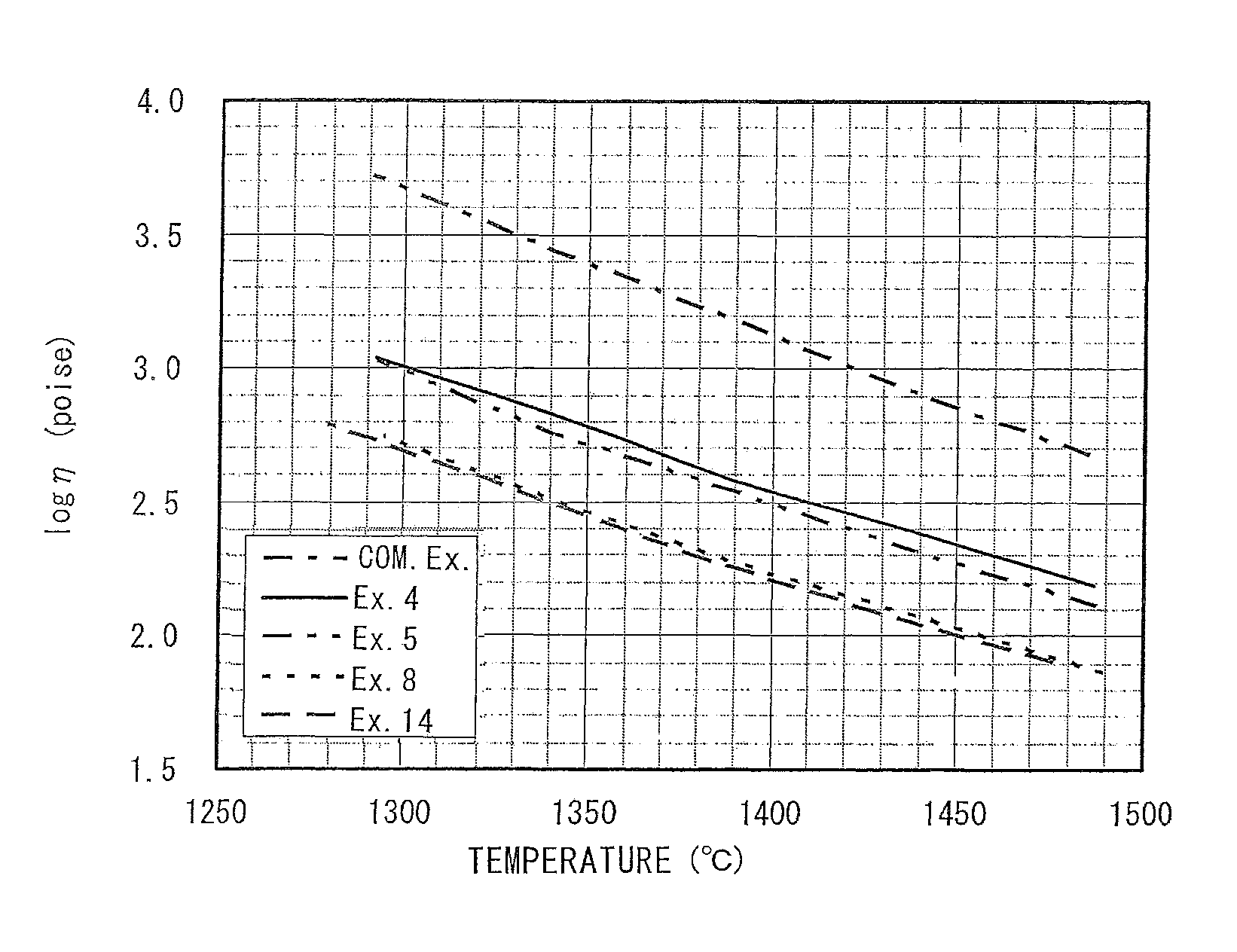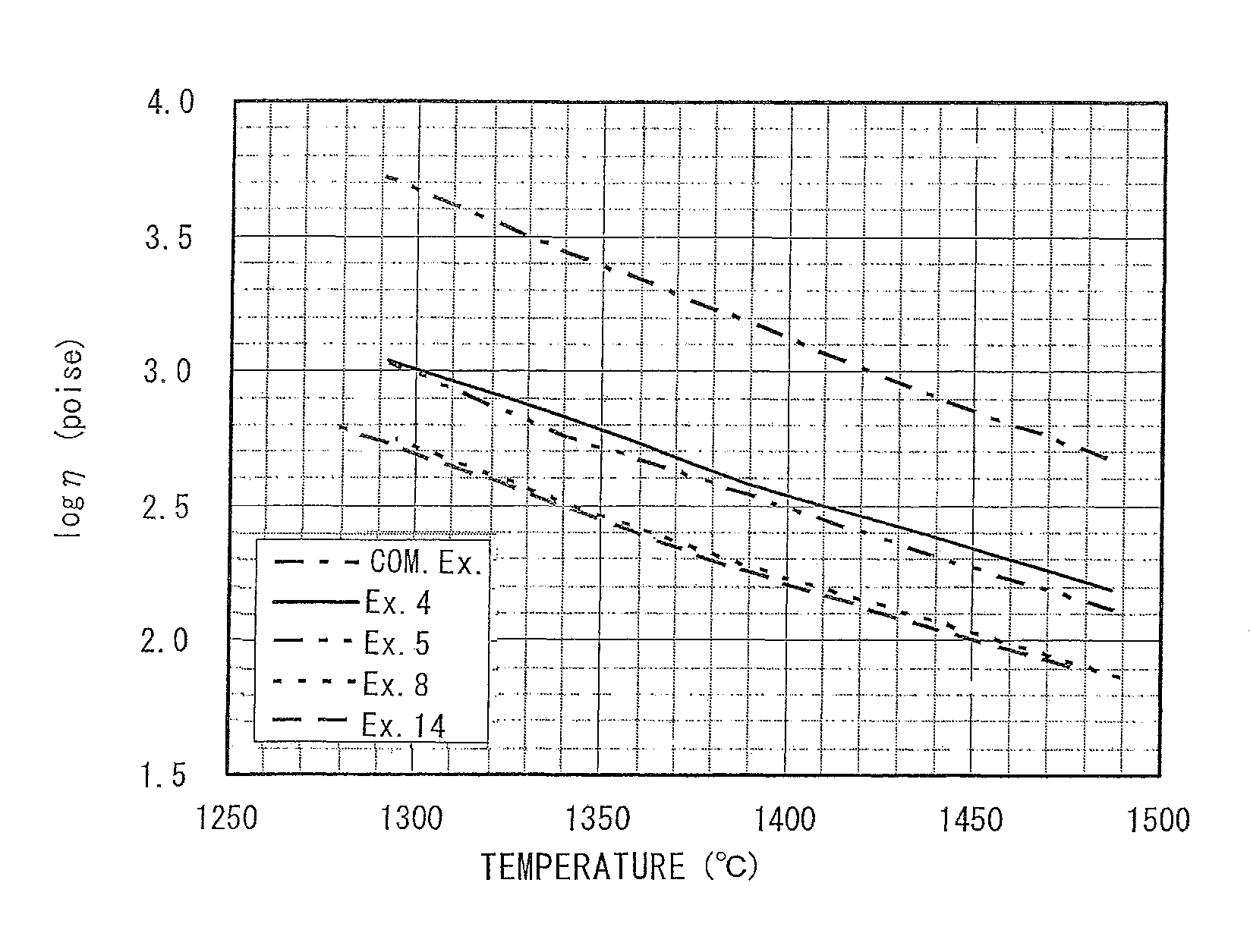Glass-ceramics
a glass and ceramic technology, applied in the field of glass ceramics, can solve the problems of difficult to thin the substrate, damage to the storage medium, and inability to obtain sufficient flatness of the substrate, and achieve the effects of low melting temperature, high adaptability to press molding, and low viscosity
- Summary
- Abstract
- Description
- Claims
- Application Information
AI Technical Summary
Benefits of technology
Problems solved by technology
Method used
Image
Examples
examples
[0086]Preferred examples of the present invention will be described below. It should be noted that the present invention in no way is limited to these examples.
[0087]Tables 1 to 4 show examples (Example Nos. 1 to 17) of compositions of the glass-ceramics made according to the present invention and a comparative example of a composition of the prior art glass-ceramics together with nucleating temperature (unit: ° C.), crystallizing temperature (unit: ° C.), crystal phase, crystal grain diameter (unit: nm), specific gravity, Young's modulus and average coefficient of linear thermal expansion (temperature range: 25° C. to 100° C., unit: 10−7° C.−1, expressed as CTE(25-100) in the tables). The comparative example is prior art β-quartz glass-ceramics disclosed in Japanese Patent Application Laid-open Publication No. Hei 11-314939.
[0088]In these tables, “nuc. temp.” designates nucleating temperature, “cry. Temp.” crystallizing temperature, “ACGD” average crystal grain diameter, “SG” speci...
PUM
| Property | Measurement | Unit |
|---|---|---|
| temperature | aaaaa | aaaaa |
| temperature | aaaaa | aaaaa |
| temperature | aaaaa | aaaaa |
Abstract
Description
Claims
Application Information
 Login to View More
Login to View More - R&D
- Intellectual Property
- Life Sciences
- Materials
- Tech Scout
- Unparalleled Data Quality
- Higher Quality Content
- 60% Fewer Hallucinations
Browse by: Latest US Patents, China's latest patents, Technical Efficacy Thesaurus, Application Domain, Technology Topic, Popular Technical Reports.
© 2025 PatSnap. All rights reserved.Legal|Privacy policy|Modern Slavery Act Transparency Statement|Sitemap|About US| Contact US: help@patsnap.com


